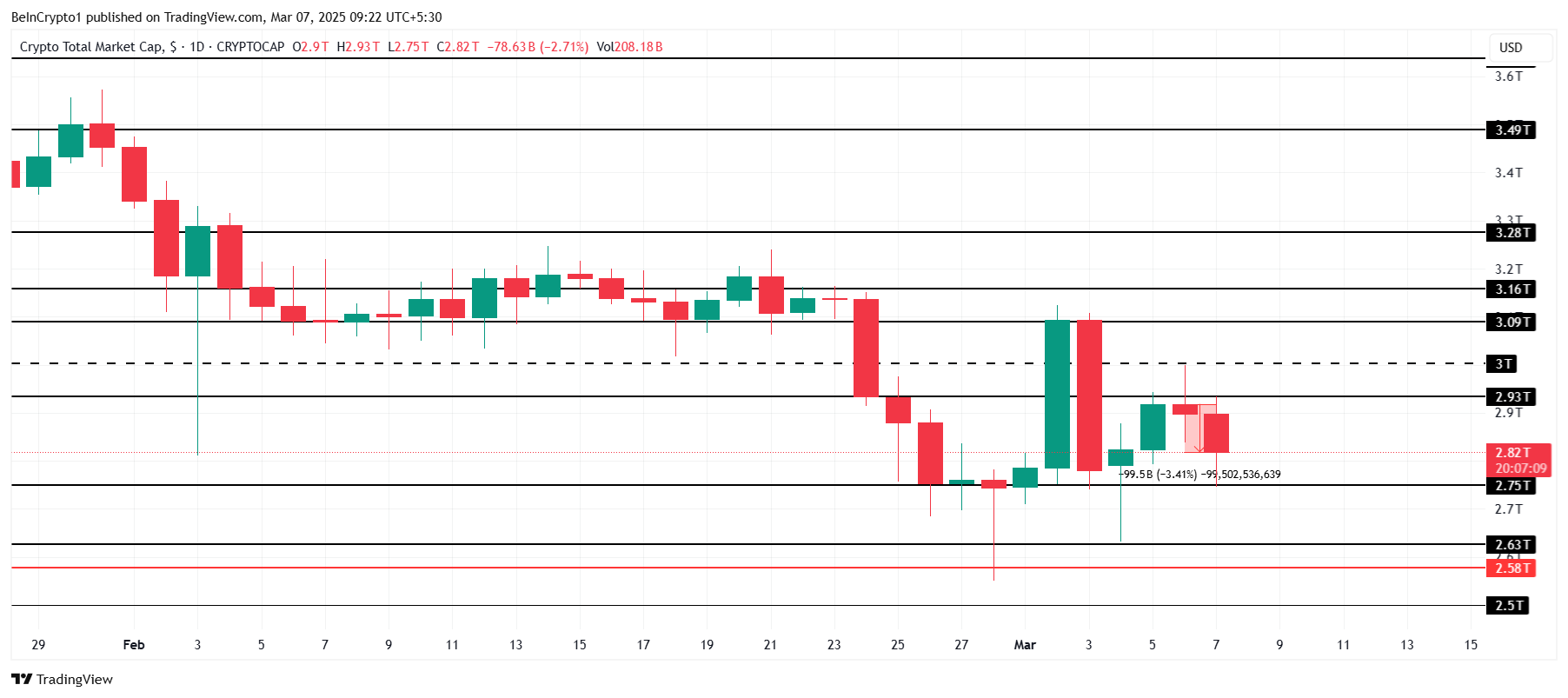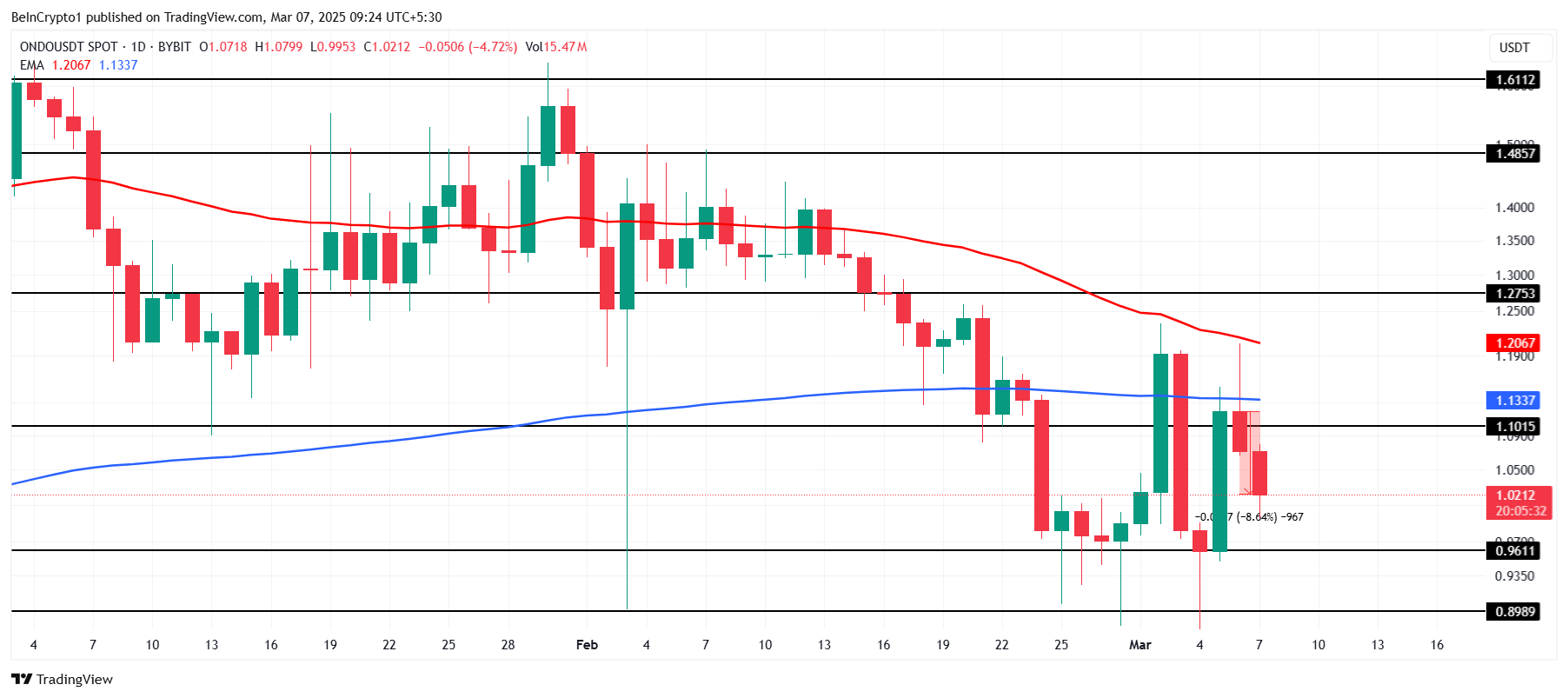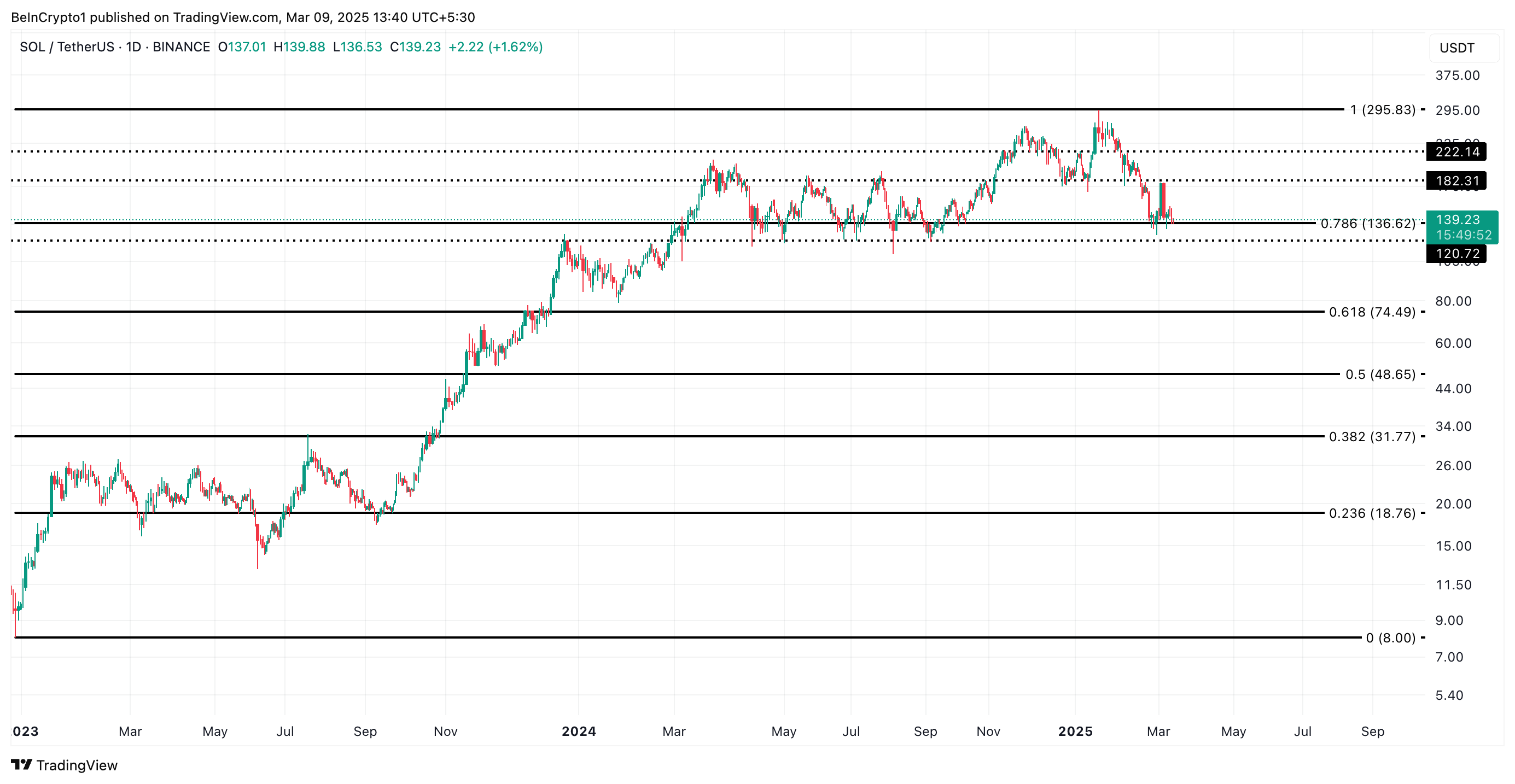The total crypto market cap (TOTAL) and Bitcoin (BTC) have struggled to recover recent losses, with global political tensions continuing to escalate. This has kept volatility high, impacting the crypto market. Ondo (ONDO) is leading the decline among altcoins, experiencing an 8% drop in the last 24 hours.
In the news today:-
- The Texas Bitcoin Reserve proposal passed the Senate with 25 out of 30 votes in favor, moving closer to becoming law. Despite some Republican defections, the bill, which does not mandate Bitcoin purchases, has garnered bipartisan support and will now proceed to the House for further approval.
- Sam Bankman-Fried, in an interview with Tucker Carlson from prison, reiterated his belief that declaring bankruptcy was a mistake and claimed FTX would have $93 billion in assets. However, his responses reflect biases, and it’s essential to consider his perspective with caution.
The Crypto Market Dips Again
The total crypto market cap lost $99 billion over the past 24 hours, currently sitting at $2.82 trillion. This decline followed a failed attempt to breach the $2.93 trillion resistance, further pressured by escalating global tensions, particularly surrounding Trump’s tariff war, which dampened market sentiment.
At present, the total crypto market cap is holding above the $2.75 trillion support level. However, the bearish sentiment persists, and if global tensions continue to rise, it could trigger further declines, potentially dropping to the $2.63 trillion support level. This would extend recent losses and further dampen investor confidence.

Despite the current downturn, a shift in broader market conditions could signal recovery for the crypto market. If TOTAL manages to breach the $2.93 trillion resistance, it could reverse the bearish trend and attempt to rise above $3.00 trillion. This would invalidate the current bearish outlook and mark the beginning of a potential rally.
Bitcoin Fails Securing Support
Bitcoin’s price is down by 4% today, trading at $87,004, just below its support level of $87,041. The broader market’s bearishness has been intense, as seen in the intra-day low of $84,667. Bitcoin’s price movement is largely influenced by this ongoing market volatility, which is hindering recovery.
If the support level of $87,041 is regained, Bitcoin may find stability and a shot at recovery. However, if Bitcoin slides further below this critical support, it could experience a decline towards $85,000 or even slide further to $82,761. This would reinforce the bearish sentiment and extend the current downtrend.

To invalidate the bearish outlook, Bitcoin must reclaim the $89,800 support level, something it was unable to achieve today. Successfully flipping this level into support could push Bitcoin’s price toward $93,625. A recovery beyond this point would indicate a shift in momentum toward the upside.
Ondo Takes A Big Hit
Ondo price has dropped by 8.6% over the last 24 hours, falling below the support level of $1.10 and currently trading at $1.02. This downturn has made ONDO the worst-performing asset of the day. The market sentiment suggests that further declines are unlikely in the near future.
Given the current market conditions, ONDO is expected to consolidate between the $1.10 and $0.96 levels. This price range has proven reliable in the past. While a major price drop seems unlikely, ONDO’s performance will largely depend on market sentiment and investor action in the coming days.

If the $1.10 support is successfully reclaimed, ONDO has the potential to rise toward $1.27. Breaching this resistance, alongside overcoming the 50-day and 200-day EMAs, could signal a shift in momentum and invalidate the current bearish outlook, paving the way for further upside potential.
The post Why Is the Crypto Market Down Today? appeared first on BeInCrypto.







